Lyviya loves horses.
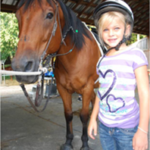 Sure, every little girl wants a pony at some point or another during her young life, but, according to her father, Liviya has always held a special place in her heart for all things equine. Little did her parents know when she was born how true and profound a statement this would one day turn out to be.
Sure, every little girl wants a pony at some point or another during her young life, but, according to her father, Liviya has always held a special place in her heart for all things equine. Little did her parents know when she was born how true and profound a statement this would one day turn out to be.
Liviya Anderson was born in September of 2004 in San Diego, California. A full-term baby with no complications, she was the second child of Brian and Rebecca Anderson, who had been blessed with their son, Axel two years earlier. She was the angel her father had always hoped for—bright and bubbly, curious and cute; and she grew into the little princess he’d dreamed about spoiling.
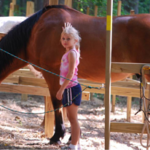 And for Liviya, spoiling meant access to, and time spent with, horses.
And for Liviya, spoiling meant access to, and time spent with, horses.
She had her first horseback ride at a county fair when she was two, and it was love at first sight. Riding lessons followed later on when she was old enough, as did a room full of horse posters and book bags, toys, and clothes emblazoned with horse prints, stickers, and emblems. A talented artist, her colorful drawings were more often than not the repository for lively daydreams involving horses of all shapes, sizes, and colors.
For her entire life up until that point, Livi was rarely—if ever—sick. Sure, she had a cough now and then, and the sniffles that plague all kids during a cool autumn spent outside playing in the leaves, but never anything of any significance. So it was a complete shock to her parents one scary day in pre-Halloween October when Liviya had to be rushed to the emergency room with a dangerously high fever.
Liviya’s father was on a plane heading home when he received the call telling him to meet his family at the hospital once his flight arrived. He was returning from the 2010 American Association of Laboratory Animal Science (AALAS) National Meeting in Atlanta, Georgia. He works in the lab animal science sector of the larger biomedical research community, and the AALAS show is the largest, most important event of the year.
At first, Liviya’s illness was thought to be a simple case of strep throat, but a quick glance at her skin while listening to her lungs revealed a series of red spots (burst blood vessels called petechiae) that held the potential for more serious conditions. Petechiae are often the indicator of a low platelet count that can lead to easy bleeding and bruising. Sometimes, petichiae can be caused by leukemia.
Cancer is one of those things that universally strike terror in the hearts of all of us. Even the word is chilling. Liviya’s father states, “I remember feeling as though my spine was made of icicles the first time I carried Livi into the Cancer Center where she was to be tested. However, we believed ourselves fortunate at the time when the test, which was a painful bone marrow biopsy, revealed that my sweet little girl did not have leukemia as we feared, but a condition then unknown to us called severe acquired aplastic anemia. My wife and I breathed a collective sigh of relief.”
Their relief was short-lived, however. Liviya’s doctor looked them square in the eye and said, “You wish she had leukemia…AA [aplastic anemia] is so rare, and the treatments options are so few. You wish she had leukemia, because we would know the path to take in treating her.”
He went on to explain that AA is a blood disorder in which the body’s bone marrow doesn’t make enough new red blood cells, white blood cells, and platelets. Red blood cells carry oxygen to all parts of your body, while white blood cells help your body fight infections. Platelets are blood cell fragments that stick together to seal small cuts or breaks in blood vessel walls and stop bleeding.
If your bone marrow can’t make enough of these blood cells, many health problems can occur. In fact, severe aplastic anemia—the kind that Livi has—can even cause death. Unfortunately, so little is known about AA at this point that the doctor was essentially saying even a diagnosis of leukemia would have been preferable.
However, once it was determined that Liviya had AA, the doctor immediately advised them the available treatment options for the condition: a bone marrow transplant and/or immune suppression. Because a bone marrow transplant has the highest rate of success, it was of course selected as their first option, with Liviya’s brother, Axel, being tested to see if he was the required exact match. Unfortunately, he wasn’t, so they turned their sights instead toward the second option: immune suppression, which carries a worrisome 50/50 chance for success.
In some cases of AA, such as Livi’s, the reason the bone marrow can’t make enough blood cells is because the body’s immune system has gone haywire and has begun attacking its own cells by mistake. No one really knows why. Immune suppression potentially disables the immune system to prevent this attack from happening. Unfortunately, the suppression is not selective, and cannot be targeted to prevent only the destruction of valuable cells. Once the immune system is switched off, the body’s ability to fight all cells—and all infection—is shut down as well. The result is a patient who becomes incredibly susceptible to illness and disease from even the most minor colds and viruses.
Immune suppression, in this case, was accomplished by transfusing a live antibody from an animal directly into Liviya’s heart so that it could be swiftly dispersed throughout her entire body over a period of 8 days. The animal antibody effectively kills the immune system’s T-cells and halts the destruction of Livi’s necessary blood cells.
The available choices for an animal antibody? A rabbit or a horse – guess which one Livi chose?
This process of isolating the horse antibody was perfected through animal testing, as was nearly every other process, procedure, and drug that Liviya has undergone since the beginning of her ordeal. Thankfully, the horse antibody did its job and shut down Livi’s immune system. Once this had occurred, new drugs were given to rebuild her bone marrow in the hopes that it will begin producing new blood cells once again.
Today, Liyvia’s immune system is back to about 60% and things are moving steadily in the right direction. Her parents don’t know, however, if and when it gets back to 100%, whether or not it will once again start attacking her blood cells and force her treatments to start all over again. What they do know is that the effects of her AA will be with Liyvia in one form or another, for the rest of her life. She’ll always be susceptible to serious infection at the least, and the resurgence of her anemia at the worst. She’ll need to be tested regularly and be always vigilante.
Have you heard? Liviya loves horses.
Laura is a Survivor – Thanks to Man’s Best Friend
 I remember only bits and pieces of that day: Being strapped into a gurney, the ambulance siren, nurses, doctors, the strange beeps and hums from the medical equipment around me, and the feeling of my young skin being pierced with needles. I also remember the fog and how I didn’t really care that it was enveloping me. I was seven years old, and at that moment, I was dying.
I remember only bits and pieces of that day: Being strapped into a gurney, the ambulance siren, nurses, doctors, the strange beeps and hums from the medical equipment around me, and the feeling of my young skin being pierced with needles. I also remember the fog and how I didn’t really care that it was enveloping me. I was seven years old, and at that moment, I was dying.
When the fog finally lifted, I remember the August sunshine trying to peek through the covered hospital window. Though faint, it burned my eyes. I remember Mom and Dad telling me I was okay. If I was okay, why did I have so many tubes attached to me? Why was there a nurse pricking my finger with a sharp lancet? Why did everyone look so worried?
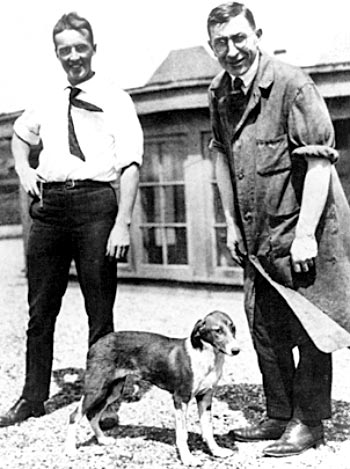 That was the day I was diagnosed with Type 1 diabetes. It began much like any other day, except that I never saw the golden August sun rise to greet the morning. I had begun to slip into a diabetic coma. At the time, I didn’t realize the significance this day would have on the rest of my life.
That was the day I was diagnosed with Type 1 diabetes. It began much like any other day, except that I never saw the golden August sun rise to greet the morning. I had begun to slip into a diabetic coma. At the time, I didn’t realize the significance this day would have on the rest of my life.
When I was seven, summer seemed to last forever, and the thought of death or illness was hard to comprehend. I remember learning about diabetes. I learned that my body didn’t produce enough insulin to manage the sugars from the foods I ate. I learned it was imperative to plan my meals and activity in advance. I also learned that I needed insulin injections every day so my body could properly use sugars to help me grow big and strong. Abnormal blood sugar levels could make me very sick, and might result in blindness, kidney failure, heart disease, and even death. Naturally, I was scared. All of a sudden, the carefree life of a seven-year-old girl came to a grinding halt; everything had to be planned.
One afternoon in early September, I got off the school bus and stopped to pet our dog, Maggie, who lay stretched across the lane. She lifted her head and I scratched the little spot on her chin where a few silver hairs were starting to invade her ruddy coat. My sister dashed into the house to watch her favorite afterschool show, as I stood up to see Mom watching me. Her hands were black; it looked like she’d been doing some final gardening before the winter frost hit.
My parents were very aware of my love for animals. I seemed to have a natural affinity for living creatures, just like they did for me. It had only been a few weeks since my diabetic diagnosis so every day brought new considerations and worries. “How was your day, Laura?” Mom asked. “Good,” I replied. Seeing my fascination with Maggie, Mom sat down on the step and told me a story I have never forgotten. “Laura, did you know that a dog like Maggie saved your life?” I stopped petting Maggie and looked up, puzzled. “A scientist worked with dogs like Maggie to learn about diabetes and discovered insulin so diabetics could live full, happy lives.”
That conversation was a turning point. Animals saved my life. I realized that if it had not been for those studies done to develop insulin therapy for diabetics, I would have died. Me, a little seven-year-old girl, would have died.
The public school library was filled with books on the subject; I remember finding one called The Discovery of Insulin. It was a big book for a seven-year-old, but I wanted to know more about how animals saved my life. Inside the book were pictures of old insulin vials, the scientists who discovered insulin, and then there was a picture of a dog named Marjorie. The picture (right) showed the scientists Banting and Best standing with her on the rooftops of the University of Toronto. Marjorie was the first experimentally induced diabetic dog to be kept alive using an insulin extract; a similar extract was later used to save the lives of humans all over the world, just like me. Mom was right—animals saved my life!
Over the years, I’ve grown up and had a wonderful life. Because of insulin, there’s nothing that I can’t do. Ironically, my husband, Rob (pictured below), was also diagnosed with Type 1 diabetes shortly after we met. Though we will always need to watch what we eat and make smart decisions, the knowledge we have about our health exists because of research. Together, Rob and I can live happily ever after.
Through the years, my gratitude for science has never waivered. I decided early in life that I would work in research so that I could care for and show my appreciation to our laboratory animals. I knew I would never be able to thank Marjorie personally (she lived and died many years ago) but I wanted to show other animals just like Marjorie how special they are.
In 1999, I became a registered veterinary technician (a nurse for animals), and I have been working in laboratory animal science ever since. Today, I am a veterinary technician manager overseeing six technicians. We work together to make sure that the animals in our care are healthy. We also train research staff and scientists about animals, humane procedures, and how to make sure that the needs of their animals are met with care, knowledge, and compassion. Because of Marjorie, I am alive. Because of Marjorie, I know that my life has purpose.
Diabetes has made me who I am, by inspiring me to pursue paths I may otherwise not have chosen. There is still no cure for diabetes, only treatments. However, because of science, I have hope. This hope allows me to believe that a world without diabetes is possible.
Thank you to all the “Marjories” who make a difference every day.
Kristina is a Survivor – Thanks to Pigs
Kristina’s Story – In Her Own Words
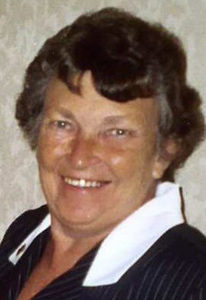 My major health problem surfaced while I was living in Eugene, Oregon in 1991. I had extreme difficulty in breathing and need for rest and sleep. Blood circulation was greatly impaired and I became almost grey in complexion. I could not take our two dogs for a walk without almost passing out. My health was failing and I became a candidate for open heart surgery with an accompanying aortic heart valve replacement.
My major health problem surfaced while I was living in Eugene, Oregon in 1991. I had extreme difficulty in breathing and need for rest and sleep. Blood circulation was greatly impaired and I became almost grey in complexion. I could not take our two dogs for a walk without almost passing out. My health was failing and I became a candidate for open heart surgery with an accompanying aortic heart valve replacement.
During this period I became part owner of an educational team called Renaissance Research Associates (RRA) and became a technical writer with my RRA colleagues of the Second Edition of the “Purina Manual”. Luckily I was able to work from home for the most part. I also served as the Laboratory Animal Management Association (LAMA) president. I was very fortunate to have a lot of help from a group of laboratory animal science colleagues during these difficult times of major health problems.
As time went by, my husband and I moved to Madison, Wisconsin in 1992. In discussions with a team of heart specialists the prognosis was not very good. For a prolonged life I was certain that I would need surgery. Many animals had contributed to the development of open heart surgery procedures and the perfection of the heart and lung machine. Pigs became the choice animal model. Many animals also contributed to the training of surgical teams to conduct surgical procedures. The use of the blood thinner Warfarin, which was originally produced as a rat poison, was discovered to reduce blood clotting in humans so that the blood could freely find its way through the aortic heart valve.
November 24, 1992 was the chosen day for my surgery at a hospital in Madison. The surgical team inserted a mechanical heart-valve produced by the St. Jude Children’s Research Hospital team. The heart-lung machine was utilized during the surgery. I was released on my 57th birthday, December 6, 1992, and was able to return home to begin a long recovery period. Daily treatment with Warfarin was a must and my blood was frequently tested to make sure it was clotting correctly.
After a long recovery period, I was able to return to my position at the University of Wisconsin – Madison where I focused on training of the people who work with animals to develop lifesaving treatments.
My surgery, developed through animal research, prolonged my life and enabled me to continue to train the next generation of laboratory animal science professionals.
Rusty is a Survivor
Thanks to Research With Animals
 My name is Rusty. I am a veterinarian and I have three kids, a wife, two dogs, and a cat.
My name is Rusty. I am a veterinarian and I have three kids, a wife, two dogs, and a cat.
Thirteen years ago, I found out that I have Marfan’s Syndrome, a genetic disease that causes your blood vessels to stretch and tear easily. In my case, the doctors found out through an imaging method called echocardiography that the blood vessels to my heart were stretching so that the valves in my heart didn’t work right. If I did not have surgery, my heart would fail and I would die.
In the surgery, they put in a new heart valve made of titanium. They also discovered a weak spot (aneurysm) on my aorta (the biggest blood vessel in your body), and they replaced it with a Dacron fabric tube. The surgery was tough: my heart and breathing stopped after the surgery was over and they had to resuscitate me, but if I had not had the surgery, my heart would have failed or my aorta would have torn and I would have died.
All of the things that helped with my recovery—the echocardiography machine, the artificial heart valve, the Dacron blood vessel, the methods used to resuscitate me—were developed with the help of animal research.
Thirteen years after my surgery, I feel great. I have been able to be a father to my kids and continue my work as an animal doctor, a teacher, and a scientist.
Because animals in research helped to save my life, and because I have seen other lives saved through animal research, I feel very strongly that animals that are needed in research deserve to be treated with kindness and respect, and I bring that feeling with me to work every day.
Jake, Dog Survivor
Animal Research Benefits Pets
Hear how Jake, a dog, has benefitd from animal research. Video courtesy of Americans for Medical Progress.
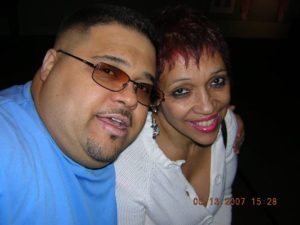 I’ve been a Veterinary Technician since 1983 – part of the first graduating class of La Guardia C.C.-Animal Health Technician Program. I have worked with many species big and small. I started in Private Practice and moved along to research after seven years.
I’ve been a Veterinary Technician since 1983 – part of the first graduating class of La Guardia C.C.-Animal Health Technician Program. I have worked with many species big and small. I started in Private Practice and moved along to research after seven years.
I worked for seventeen years as a veterinary technicianin Research at a major NYC hospital.
As a Veterinary Technician one of my tasks was to work in the Surgery area doing Post-op and occasionally monitoring surgeries.
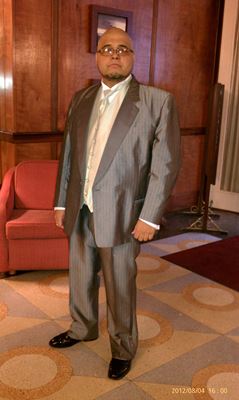 After 2001, laproscopic surgery of the Gastric Bypass, Gastric Sleeve & Lap band were done with swine. Three of us took turns every two hours alternating measured amounts of feed and water to the pigs. We also administered analgesics and fluids as scheduled. I sometimes had to replace catheters in the cage. All in a days’work. I got to know the surgeons, as well, and often discussed cases with them. We wanted the animals to do well and progress.
After 2001, laproscopic surgery of the Gastric Bypass, Gastric Sleeve & Lap band were done with swine. Three of us took turns every two hours alternating measured amounts of feed and water to the pigs. We also administered analgesics and fluids as scheduled. I sometimes had to replace catheters in the cage. All in a days’work. I got to know the surgeons, as well, and often discussed cases with them. We wanted the animals to do well and progress.
On March 2, 2012, my son had the Gastric Sleeve Surgery performed at the same hospital. As we waited for him to go upstairs, his surgeon’s name came up a few times. It wasn’t until I heard the name for a second time that I saw an image in my head. I described him to my son and the receptionists, but they couldn’t verify. I told my son to ask the surgeon if he had worked upstairs in Research with pigs.
Hours later, the notification buzzer went off and it meant that the surgeon would be coming to speak to the family. Well, there he came and sure enough, it was the surgeon I had worked with previously with the swine in the protocols. I hugged him and said “I was so glad it was him that did the surgery on my son because I remembered his concern and compassion for the animals”.
So, the circle closes. All the work and time put in so many years ago by all the veterinarian technicians and surgeons will extend my son’s life.
Pre-surgery, my son was a 46 year old, 300 pound diabetic with high blood pressure, high cholesterol and bad back and feet. Today, my son is doing very well. He has not had to administer insulin since the surgery, although he is still on blood pressure and cholesterol medication. He has lost 81 pounds to date. He cooks more now using measured portions and we exchange recipes and food. His face looks like the boy I remember.